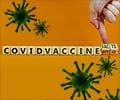Keeping people from spending too much time in small rooms is essential for lowering the risk of SARS-CoV-2 airborne transmission.
- Ventilation rates for the alpha variant must be roughly four times more than for the ancestral strain
- The ventilation rates needed for the Delta and Omicron variants are respectively 20 times and 50 times higher
COVID-19 death and illness have been drastically reduced thanks to vaccines against the SARS-CoV-2 virus that causes the disease. However, variants of the virus continue to develop, and the worldwide risk of infection from SARS-CoV-2 variants remains very high.
In this context, the researchers sought to evaluate how the three descendent strains that have predominated at different points throughout the pandemic- Alpha, Delta, and, at present, Omicron- have changed the risk of airborne transmission of the virus in confined spaces from the ancestral strain that emerged in 2020.
High Risk of COVID-19 Transmission in Small Rooms
Despite the obvious advantages of vaccination, the researchers hypothesized that the danger of airborne transmission in small areas might be increased, necessitating a re-evaluation of the corresponding ventilation precautions.Three SARS-CoV-2 variants’ quantum generation rate values, or "q," were obtained by the researchers (Alpha, Delta, and Omicron). The smallest number of virus particles (also known as "virions") required to cause infection is referred to as the "quantum" in this context, which has nothing to do with quantum physics. And the quantum creation rate indicates how many quantum particles an infectious person produces each hour.
Over time, the q value has been rising steadily (contributing to increased transmissibility). The q value of the original SARS-CoV-2 strain was 14-48 quanta (or doses) per hour. The q value of the original SARS-CoV-2 strain was 14–48 quanta (or doses) per hour. The scientists determined that the q for the Alpha variation was 89–165 quanta (or dosages) per hour, the q for the Delta variant was 312–935 quanta per hour, and the q for the Omicron variant was 725-2,345 quanta per hour.
The Wells-Riley equation, a quick and easy calculation that determines how likely it is for a person to contract an airborne transmissible disease at various rates of airflow in a room or structure, was used by the researchers to enter these q values.
The ventilation rate, expressed in cubic meters per hour, is the rate at which new air enters a space or structure.
According to Wells-Riley, the risk of infection increases over time with increasing q and decreasing breathing rate. Thus, the risk grows with the amount of time spent in that room or building increases. Although every building is unique and several other factors will affect the real-world q value, the Wells-Riley equation provides a useful, basic estimate for the average building.
Ventilation Rate Requirements to Prevent the Spread of COVID-19
The result of the computation indicates at what ventilation rate, for a certain q value per hour, the risk of infection remains below 1%. The room or building must have a ventilation rate of 100–350 cubic meters per hour if the person was in there for 15 minutes, and 1200–4000 cubic meters per hour if the person was in there for three hours, according to the Wells-Riley calculation for the ancestral strain of the virus that was produced.The researchers discovered that to guarantee an infection probability under 1% for all three variations of concern, ventilation rates have to be significantly raised.
It translated to ventilation rates for Alpha of 650–1,200 cubic meters per hour for exposure times of 15 minutes and 8,000–14,000 cubic meters per hour for exposure times of three hours.
The rate increased even more for Delta, going from 2,200 to 6,800 cubic meters per hour for 15 minutes to 26,000 to 80,000 cubic meters for three hours.
The ventilation rate for the Omicron variant reached 5,400-17,000 cubic meters per hour for 15 minutes and 64,000-250,000 cubic meters per hour for three hours (without discriminating between variants).
“Without any additional measures, this means the Alpha variant requires a ventilation rate some four times more aggressive than the ancestral strain,” said Bin Zhao, professor at Tsinghua University in Beijing, “while the Delta and Omicron variants require ventilation rates roughly 20 times and 50 times greater. This is difficult to meet for actual building engineering.”
Lowering the Risk of COVID-19 in Closed Spaces
The good news is that the ventilation rate necessary to limit the risk of infection to under 1% decreases to around one-hundredth of these reported values if both the susceptible person and the sick person are wearing N95 masks.The researchers also discovered that when utilized in situations lacking N95 masks, air purifiers failed to reduce transmission.
It suggests that minimizing extended exposure in small areas is still essential for lowering the risk of SARS-CoV-2 airborne transmission.
Source-Medindia
















